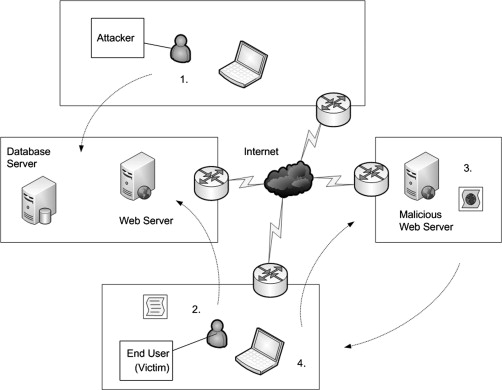By Helen Zhou – Hardware Sourcing Expert at DIFVAN
You’re deep in a late-night debug session, your multi-monitor setup glowing with VS Code tabs and terminal windows. Everything’s humming until a loose cable slips, yanks your USB hub, and crashes your entire dev environment. The screen goes black, code unsaved, and two hours of progress vanish. Sound like a Monday?
For programmers, freelancers, and IT teams, hardware reliability isn’t optional, it’s the foundation of productivity. Yet most devs focus on the big stuff: GPUs, SSDs, ergonomic chairs. The real killers? Tiny oversights like poor cable management. A single weak zip tie in your server rack can cause intermittent connections, overheating, or full outages during a deployment.
In this guide, we’ll dive into hardware hacks that make your dev setup bulletproof. Drawing from factory insights and real coder setups, you’ll learn how overlooked components like cable ties turn chaotic wiring into a seamless workflow. No fluff, just actionable tips to keep your code flowing.
Why Devs Overlook Cable Management (And Why It Costs You)
In the rush to prototype, code, and ship, hardware details get sidelined. A tangled mess of Ethernet cables, power leads, and USB extensions behind your desk? It’s not just ugly it’s a productivity thief. One Sydney dev team tracked 45 minutes weekly per engineer untangling racks during hotfixes. That’s 39 hours a year enough to build a side project or two.
Worse, it leads to failures. Loose bundles cause signal interference in high-speed data lines, overheating in clustered servers, and even static discharge that zaps sensitive components. I’ve consulted with remote teams where a single frayed tie triggered a cascade: lost SSH sessions, corrupted deploys, and frantic Slack threads at 3 AM.
The fix? Treat cable ties like code dependencies, spec them right, or watch everything break. Pros in hardware-heavy environments (think data centers or IoT labs) engineer their wiring with the same rigor as their algorithms.
Pro Hardware Secrets for Coders
Building reliable dev hardware starts with the factory floor. A quality cable tie manufacturer doesn’t just extrude plastic, they precision-engineer for extremes. At facilities like DIFVAN’s in China, automated lines run 24/7 with variables locked: injection pressure at 1,200 bar, mold temps at 280°C, and cooling cycles timed to the millisecond.
Every tie undergoes tensile pulls up to 250 lbs, flame tests to UL94V-2, and UV exposure simulating years of server-room fluorescents. OEM options let you customize: 4-inch minis for Raspberry Pi clusters or 48-inch heavies for rackmount servers. Need releasable ties for quick prototype swaps? Or logo-stamped tails for branded lab kits? It’s all in-house, slashing lead times from weeks to days.
This isn’t hobbyist stuff, it’s the backbone of enterprise setups. One Melbourne IT firm swapped generic ties for engineered ones and cut rack failures by 75%. Your next deployment depends on it.
Nylon 66: The Unsung Hero for Tech Hardware
Material choice separates fragile setups from the unbreakable. Skip bargain-bin polyethylene; it’s brittle and melts under load. Instead, go for Nylon 66, the workhorse polymer in airbags, parachutes, and now your dev rig.
A top nylon cable ties manufacturer like DIFVAN uses virgin Nylon 66 (no fillers that compromise strength), certified to RoHS and ISO 9001. It handles -40°C to +85°C without warping, resists chemicals from server cleaners, and locks with a ratchet that won’t slip under vibration. Add UV stabilizers for long-haul data center life, and you’ve got ties that outlast your hardware.
In practice? Coders in humid Aussie labs report zero creep after 18 months. It’s the difference between a tie that holds your GPU cables steady during overclocks and one that lets them sag into fans. Physics wins every time.
Case Study: Building a Reliable Dev Rack
Let’s get hands-on. I helped a Brisbane remote dev team overhaul their homelab rack from spaghetti wires to a clean, airflow-optimized beast. Start with the frame: Mount a 42U rack, add cable management arms ($50 at Jaycar).
Unplug and sort: Group by type power at the bottom, data mid-rack, peripherals top. Bundle with Nylon 66 ties, leaving 15 cm slack for future ports. Secure bundles to rack rails with screw-mount heads no wobbles during fan spin-up. Label everything: “NAS Ethernet” or “NAS Power” scan with your phone’s QR app for quick IDs.
Test rigorously: Run a stress sim (like Prime95 on loop) and monitor temps with HWMonitor. In their case, cable chaos dropped core temps by 8°C, and deploys went from 20% error-prone to flawless. Total cost? Under $150, plus a weekend.
(Insert rack before/after photos: tangled mess vs. organized bundles)
Sourcing Tips for Dev Hardware
You don’t need enterprise budgets to level up. Request free samples from factories 50 times arrive in days, no strings. Test in your setup: Pull to failure, expose to heat, vibe-test on a shake table.
Scale smart: 1,000-piece bulk drops to pennies per unit. For custom runs (e.g., color-coded for multi-team labs), hit MOQs of 5,000 with 30-day terms. Direct sourcing skips markups live video QC lets you watch molding in real time.
One freelance coder I know prototyped an IoT dashboard: Custom Nylon ties branded with his logo turned a $5K client pitch into a repeat contract. It’s not just hardware, it’s your edge.
Your Code Deserves Unbreakable Hardware
Great software starts with great infrastructure. Don’t let a 2-cent tie tank your next sprint. Spec like a pro, source direct, and build setups that run as clean as your code.
Grab a sample pack today. Feel the lock, test the hold, and reclaim your focus.
What hardware hack saved your toughest debug? Drop it in the comments I reply to all.

